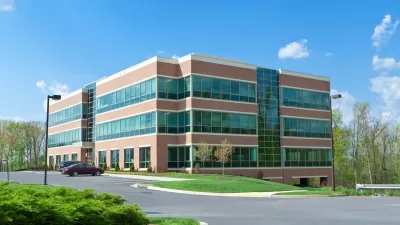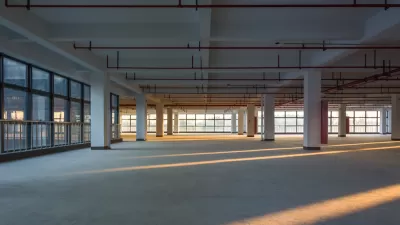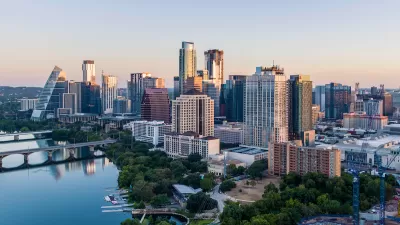As tech firms like Apple expand their satellite offices and remote work opportunities, economists and work experts debate just how much the dispersal made possible by remote work will be held in check by the forces of agglomeration.

In 2012, economist Enrico Moretti published his analysis of economic agglomeration in his widely read The New Geography of Jobs, in which he cited the "Great Divergence" between the places with concentrated talent and jobs and the places left behind by economic development. Now, with remote work opening up new possibilities to live and work in more diverse places, will this model be dismantled?
Moretti doesn't think so, writes Greg Rosalsky. The Berkeley economist "believes that computer screens remain a poor substitute for being face to face. Living and working near one another, he says, allows for random collisions of brains that can spark new ideas. Ideas that would not be generated on Zoom."
"In 2020, a group of economists surveyed 22,500 American workers and executives and found evidence that remote work would 'stick' — but they weren't talking about full-time remote work. The average office worker, they predicted, will work two days a week from home — as Apple is now allowing its workers to do. That's a huge change. But it still means that workers will have to be in the office three days a week. 'If that's the case, the link between place of work and place of residence will stay intact,' Moretti says."
To Moretti, the "gravitational vortex" of agglomeration is too powerful a force to be completely eliminated.
FULL STORY: Why Remote Work Might Not Revolutionize Where We Work

Alabama: Trump Terminates Settlements for Black Communities Harmed By Raw Sewage
Trump deemed the landmark civil rights agreement “illegal DEI and environmental justice policy.”

Planetizen Federal Action Tracker
A weekly monitor of how Trump’s orders and actions are impacting planners and planning in America.

Why Should We Subsidize Public Transportation?
Many public transit agencies face financial stress due to rising costs, declining fare revenue, and declining subsidies. Transit advocates must provide a strong business case for increasing public transit funding.

Understanding Road Diets
An explainer from Momentum highlights the advantages of reducing vehicle lanes in favor of more bike, transit, and pedestrian infrastructure.

New California Law Regulates Warehouse Pollution
A new law tightens building and emissions regulations for large distribution warehouses to mitigate air pollution and traffic in surrounding communities.

Phoenix Announces Opening Date for Light Rail Extension
The South Central extension will connect South Phoenix to downtown and other major hubs starting on June 7.
Urban Design for Planners 1: Software Tools
This six-course series explores essential urban design concepts using open source software and equips planners with the tools they need to participate fully in the urban design process.
Planning for Universal Design
Learn the tools for implementing Universal Design in planning regulations.
Caltrans
Smith Gee Studio
Institute for Housing and Urban Development Studies (IHS)
City of Grandview
Harvard GSD Executive Education
Toledo-Lucas County Plan Commissions
Salt Lake City
NYU Wagner Graduate School of Public Service





























